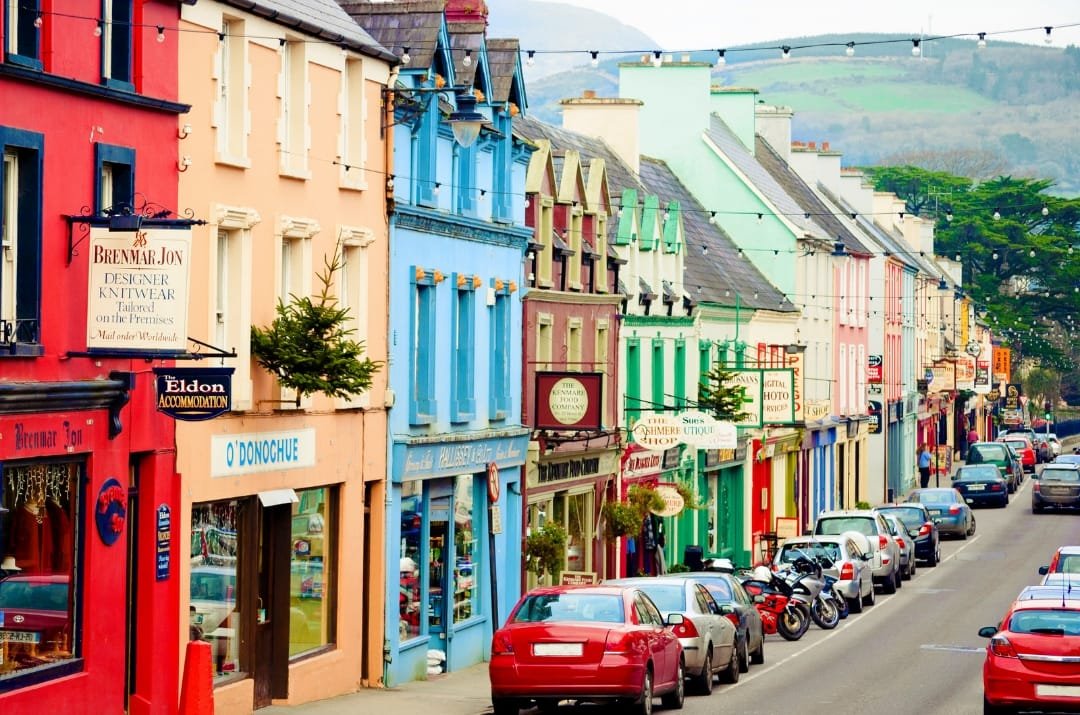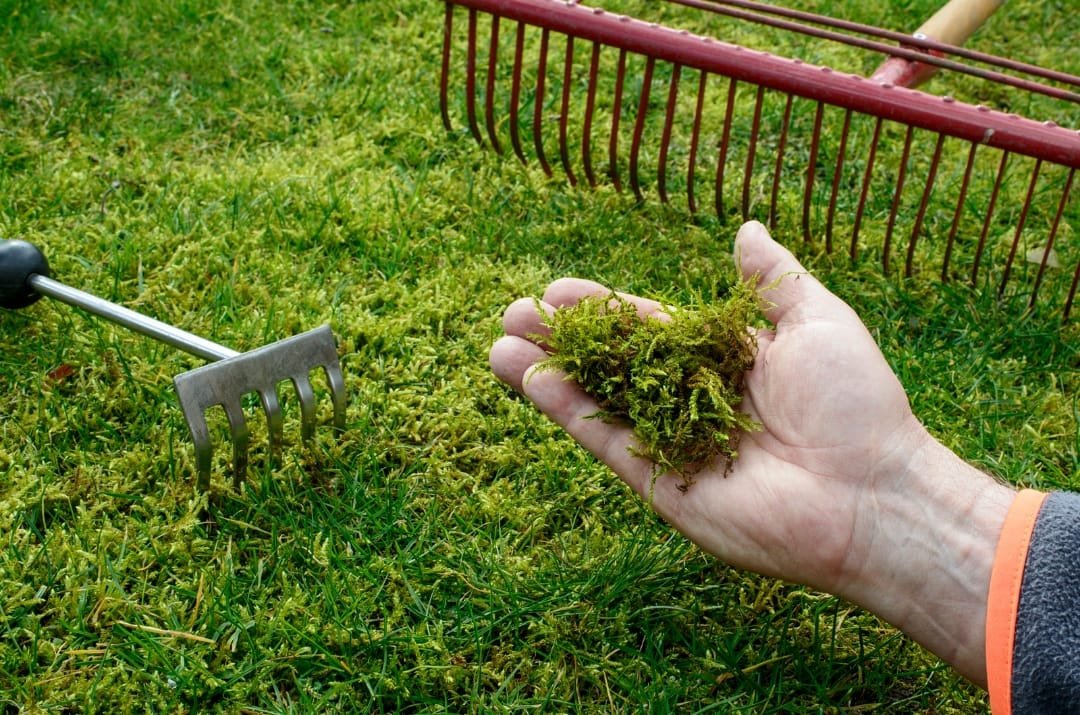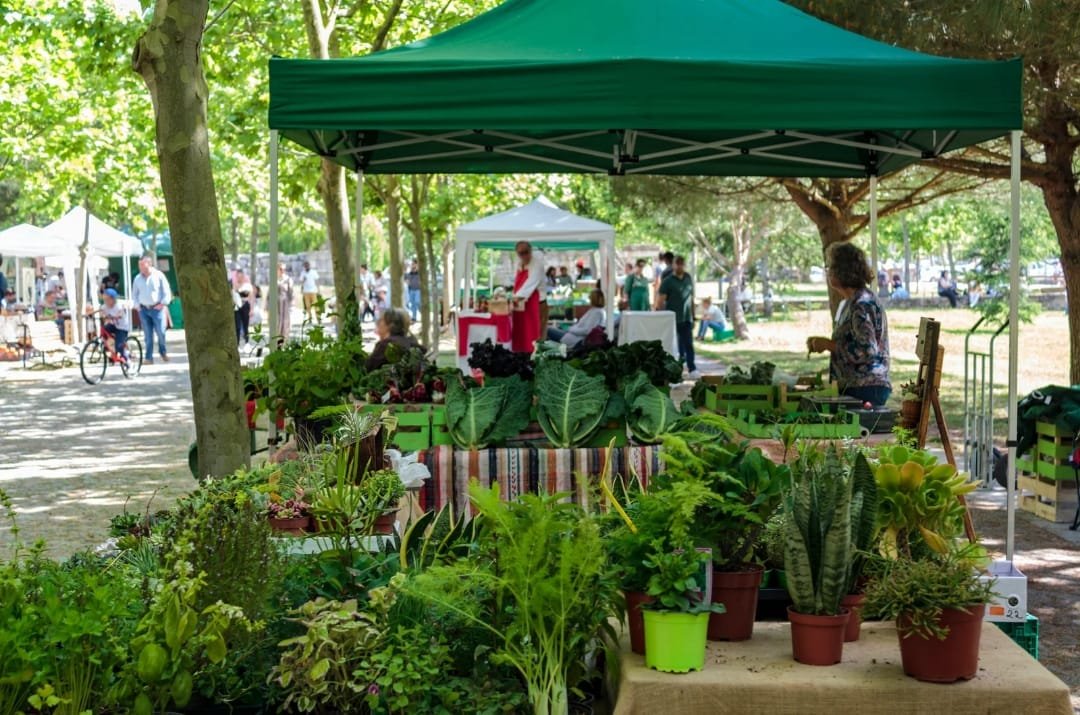
Ballinastoe Woods Hike | Everything You Need to Know
I’ve always been drawn to County Wicklow. Partly because of its reputation (known as “the Garden of Ireland”) and partly because it’s been featured in
We all know those friends who just can’t stay in one place, right? They’re always on the move, looking out for the next adventure. Simply sightseeing isn’t enough for them– they crave excitement, challenge, and a bit of risk during travels. For these adventure lovers, the rope bridge is the ultimate destination. Crossing a 100-foot high bridge over the ocean, especially when the wind makes it sway every now and then, can definitely be a challenging task.
Hey, hello everyone. Today, I am going to cover everything you need to know about the Rope Bridge, from how much tickets cost to what to see nearby. Let’s get started!
You’ll find the Rope Bridge in Northern Ireland, a stone’s throw from Ballintoy Harbour. Getting there is easy. It’s just a quick 15-minute drive from Ballycastle or a short 25-minute drive from the Giant’s Causeway.
During the summer months, you can be a little bit late due to the high number of tourists. After all, Giant’s Causeway and the Rope Bridge are Northern Ireland’s two most popular attractions.
There are quite a lot of tour buses going up and down this road too. You can easily join a day tour from Dublin or Belfast, or take public transport. The best way to travel from Dublin to the Rope Bridge is by train, which takes about 5 hours and 48 minutes and costs between €40 to €60. Alternatively, you can take a bus, which takes almost the same amount of time.
You can also rent a car. If you are planning to do so, must remember that the country roads in Ireland are quite narrow and windy, compared to the ones in the US. So if you are not a very experienced driver, it would be better if you just join a day tour or take public transport. And here people drive on the other side of the road.
The best time to visit the Rope Bridge is during spring or summer, from May to September when the weather is nice for outdoor activities. In this period the bridge stays open longer, from 9:00 am–5 pm giving you more time to enjoy. But it gets busy with tourists in the summer, so consider going on weekdays or in the morning to avoid the crowds.
I went in May because it’s less rainy and windy then. Just a heads up: the Rope Bridge shuts down immediately if the wind is too strong, so it’s important to pick the right season! We wouldn’t want an unexpected shutdown to ruin our plans.
No, It’s not free, and also not too expensive. Generally, for adults, the price is £13.40, for children, it is £6.85, and for families, it is £33.85. But it changes depending on the season. I put the peak season prices below (at the time of writing):
Adult £15.50
Child £7.75
Family £38.75
But here is a twist, you only need to pay if you want to cross the bridge. So, you can easily enjoy a free walk from the Rope Bridge car park to the actual bridge. It’s about a 1km walk and takes around 25 minutes.
You’ll see a wooden hut near the car park when you arrive. It might seem like you have to pay to go past that point, but you don’t. If you’re not planning to cross the Rope Bridge, just walk past the wooden hut and keep going.
And I saw many doing this due to their fear of heights. They parked their car for £10 per car and went on to enjoy the beauty of the rope bridge. But trust me, even the short walk to the rope bridge is absolutely beautiful. Here, you can find Larrybane Quarry, Sheep Island, and on a clear day, maybe even Scotland.
The locals say to plan for about 1 to 1.5 hours for your visit. If you go when it’s not too busy, it might be quicker and in the summer when it’s packed, expect it to take a bit longer.
I stayed for about 2 hours, just taking my time and soaking it all in and I would suggest you do the same. Just go with the flow and enjoy your time there!
Okay, let me share my experience. You will get a clear idea from that.
Like everyone, I was thrilled about crossing the bridge. Near the parking lot, there was a little shop selling drinks and snacks, with tables outside where you could sit and eat. But I was so eager to get to the bridge that I didn’t stop there.
I arrived in 15 minutes and noticed there was a line of people waiting, and you’ll probably see that too. Yeah, this bridge is usually packed with lots of people! But I had to stand for only 16 minutes in the queue and there was plenty to look at while waiting.
But what caught my eye was the height of the bridge. It was my first time seeing it in real life and all I noticed were wires hanging 100 feet in the air, 100 feet! And if I fell from that, I was sure to die. This seemingly death trap was 60 feet long from Northern Ireland’s mainland to the small fishing island, Carrick-a-Rede.
As time passed, the nervousness grew. I saw people changing their minds and returning, but who would want to miss this opportunity when they’re so close?
I calmed down after a short time. The security arrangements actually helped with that. As I went closer to the bridge, I saw staff members on both sides. they were keeping track of how many people were allowed on it at one time. The planks were quite close, with only a minimum gap between them. And the staff members reassured that crossing wouldn’t take too long either, only 30- 4 0 seconds.
So I waited with great excitement. While waiting in line for 15 minutes, I found out some important stuff. For example-
There was a reason for all the arrangement: for generations, fishermen once relied on Carrick-a-Rede as the best spot for catching salmon. The name, Carrick-a-Rede, comes from the Scottish Gaelic ‘Carraig-a-Rade’ which means “The Rock in the Road”. They imagined this island as an obstacle for the migrating salmon
Interestingly enough, salmon have been fished at Carrick-a-Rede and Larrybane since 1620, and that’s where our story begins. Even though it’s no longer around, salmon fishing used to be a big deal along the Causeway Coast. They even went as far as building a castle on the River Bann in Coleraine just to manage all the fishing action.
King James I & VI even tried to get Protestant traders from London to move to Northern Ireland in the early 1600s by offering them salmon fishing rights. Along the Causeway Coast, you’ll spot little cottages where people used to fish for salmon. Sometimes, these cottages are on tiny islands or cliffs, like Carrick A Rede and Kinbane Head.
In tales about Finn McCool, a legendary figure, there’s a special salmon that gave him incredible knowledge when he took a bite of it by accident. You can find a sculpture of this special salmon, also called the Big Fish, in Belfast. They made this sculpture in the 1970s to celebrate the return of salmon to the River Lagan. Interesting right?
Fast-forward to today, the bridge is much safer. Even though it moves a bit, you’ve got two handrails to hold onto, a strong boardwalk in the middle, and nets on the sides so you won’t slip through. So, no need to worry about falling.
For over 350 years, salmon fishermen have been making bridges to the island. And yeah, they’ve changed a lot over time. In the 1970s, the bridge had only one handrail and a few wooden planks with gaps in between. Still, you can even find a famous picture of a brave man sitting on this risky bridge peacefully! Visit this link.
This change happened in 2008. A construction company from Belfast put up the current wire rope bridge. It’s strong and steady for everyone who crosses it today.
And, what happened with the fishing?
Well, in 2002, things changed for the island’s fishermen. the fish started migrating to different places. Pollution and too much fishing out at sea also played a part in making the salmon population go down. So, in 2002, after hundreds of years of fishing, it all came to an end, and the last fish was caught. Alex Colgan, a fisherman from Ballintoy, was the very last person to fish at Carrick-a-Rede. Now, all that’s left of their fishing legacy is a lonely, whitewashed cottage sitting on Carrick.
If you’re brave enough to walk across the shaky 100-foot high bridge, you’ll get an amazing view of the green water flowing around. It’s a top choice for selfies and capturing the perfect moment; indeed an incredible experience, almost like seeing it from a bird’s eye.
As I reached the other side, I was amazed by the views of Rathlin Island and even Scotland. Plus, it was super close to the UNESCO World Heritage Site, the Giant’s Causeway. There were sea birds all over the sky. You might spot it too, it is the most common scene.
Along with spotting seabirds, you might also see basking sharks, dolphins, and porpoises from the rope bridge. Keep an eye out for these cool creatures while exploring the rope bridge area.
Since crossing the bridge is the main thing to do, lots of people brought along a picnic to really make the most of their visit. That way, they could relax, sit down, and take in the beautiful view for a while. I found this idea pretty great, I think I might try that next time too.
Oh yeah, a unique part that can’t be missed is stargazing. Carrick-a-Rede is an incredible spot where you can see really dark skies at night. It’s one of only two sites to be granted ‘Dark Sky Discovery’ status in Northern Ireland. The other spot is Oxford Island by Lough Neagh. Looking up at the stars from Carrick-a-Rede is like entering a magical world filled with twinkling lights in the dark sky but for this, you have to stay.
Once you’re back on the other side of the bridge, you can walk up the steps and follow a different path that goes over the hill. From there, you’ll see the bridge from a new angle before coming back to the main path that leads to the car park.
If you can’t stay at night, then just hang out there for a couple of hours and take a moment to soak it all in before you head back across the bridge. There is just one way back – across the bridge.
As I made my way back from the rope bridge, I felt really happy and satisfied. The amazing views and the fun of crossing the bridge stayed with me. Even though I was a little sad to leave early, I was thankful for the awesome memories I made and the exciting time I had.
That’s all about the rope bridge. If you’re exploring the Causeway Coastal Route, make sure to stop at the rope bridge. It’s much safer now and one of the most beautiful spots on the whole island of Ireland.

I’ve always been drawn to County Wicklow. Partly because of its reputation (known as “the Garden of Ireland”) and partly because it’s been featured in

I will get personally offended if you visit Ireland and don’t add Book of Kells in your itinerary. As a former student of Dublin City

We all heard about dingle, right? This small town on the Dingle Peninsula has lots to offer. Dingle is a small town of beautiful Ireland.

Take your pick from our carefully curated selection of most unique Airbnb accommodation in Killarney, and be sure of a warm welcome and a wonderful

Given Ireland’s climate and dominant soil types, most homeowners will experience moss on their lawns at some point. Hey friends! Today, we’re diving into the

Discover Herbert Park Market every Sunday. Enjoy fresh produce, handmade items and a vibrant community atmosphere in Dublin’s green spaces. Herbert Park is in the
© 2024 Alfa Diary. All rights reserved